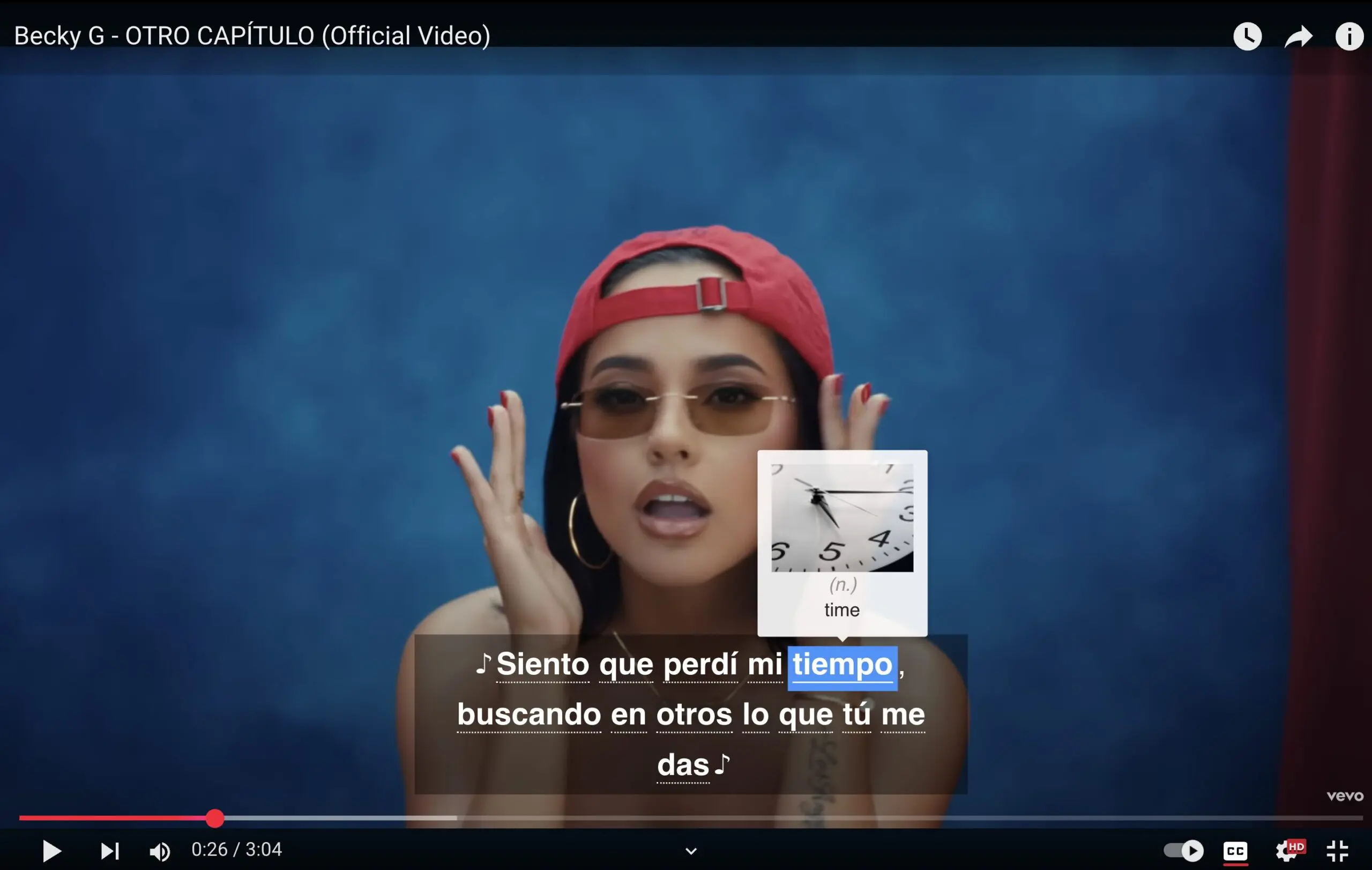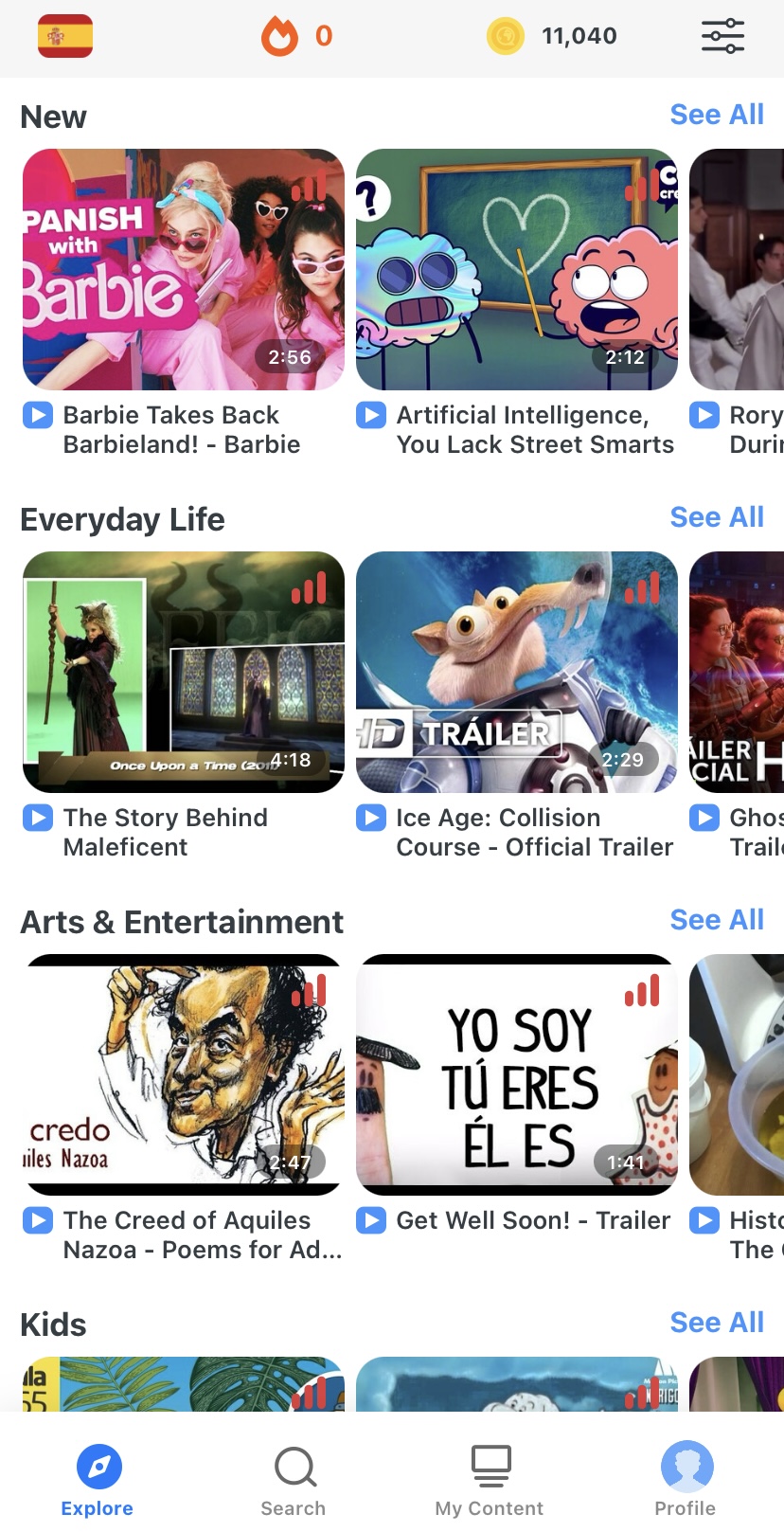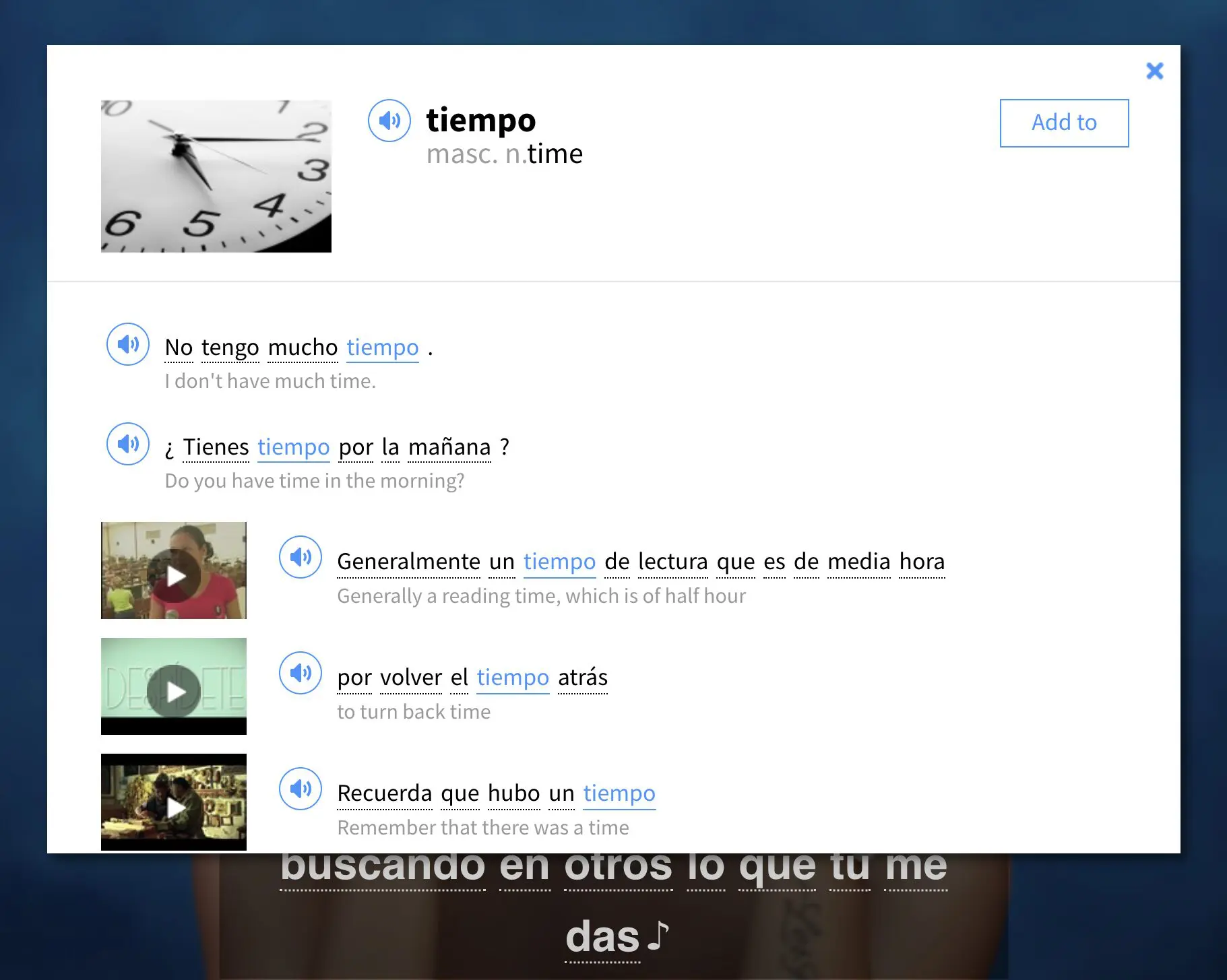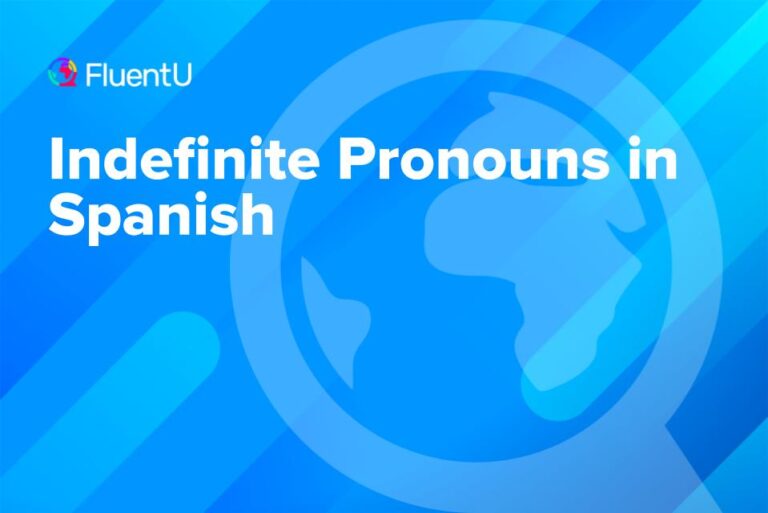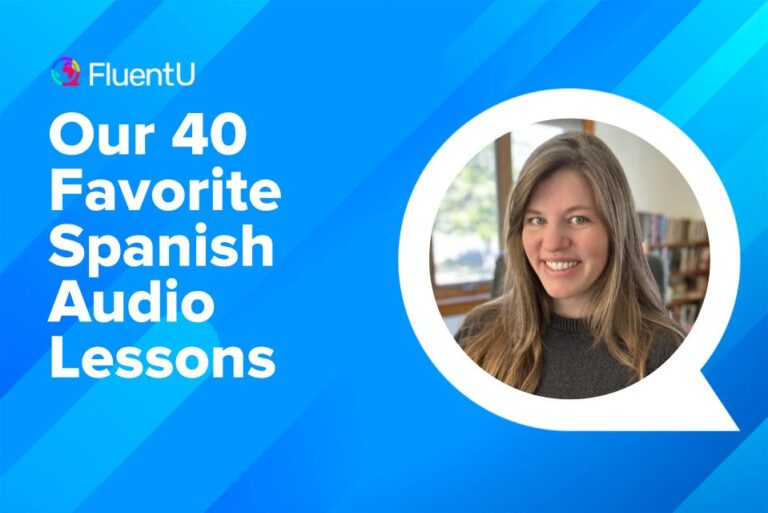21 Best Tools to Improve All Spanish Language Skills
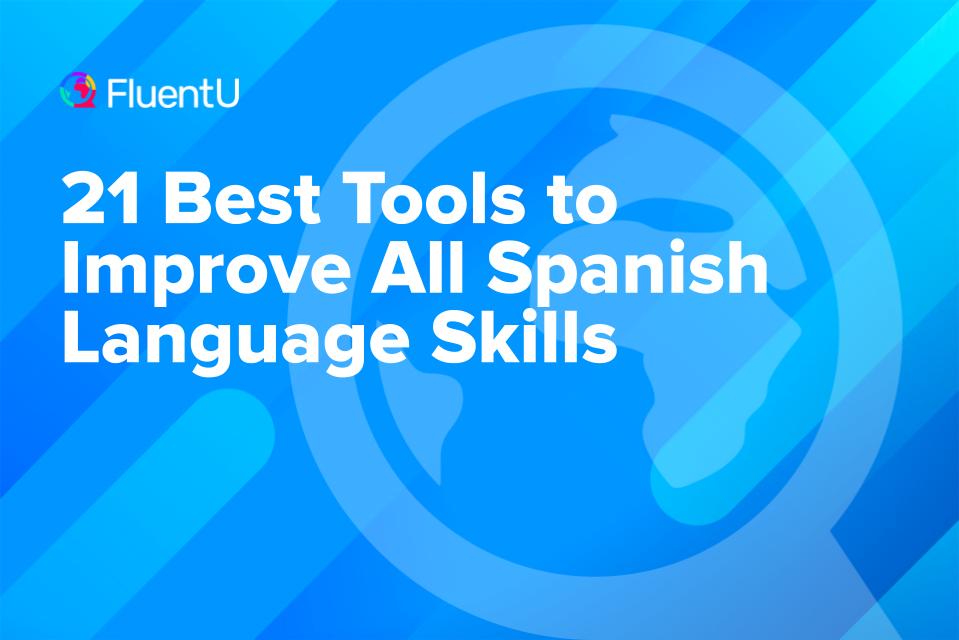
It’s easy to find Spanish learning tools and resources online these days. But the key is choosing the ones that are actually effective. After years of learning Spanish as a foreign language and doing thousands of hours of research, I have come up with a list of the best online tools to learn Spanish.
I have chosen 21 excellent resources that have been thoroughly tested and are sure to improve your Spanish language skills, from vocabulary and grammar to speaking and listening. You’ll also find some of the same recommendations in this video from our YouTube channel:
Download: This blog post is available as a convenient and portable PDF that you can take anywhere. Click here to get a copy. (Download)
Best Overall Spanish Learning Tools
Memrise

What it is: A program based on spaced repetition paired with native speaker video and audio.
If you used Memrise prior to 2019, you would know it as a whole different program. It used to focus on vocabulary acquisition through community-created vocabulary decks. In the past two years, however, the program has distanced itself from community content. If you’re curious why this decision was made, Memrise CEO Steve Toy has been very open about why this is all happening over on this Reddit thread.
If you loved the old Memrise, you might be disappointed. The good news is that the new Memrise offers so much more to learners. What used to be a vocab-only experience is now a complete learning program dedicated to teaching languages more thoroughly. The new Memrise uses a system they call “Learn, Immerse, Communicate.” The idea builds and enhances on what they’ve been doing for years: learn vocabulary, see native Spanish speakers speak this vocabulary then practice it with Chatbots or AI.
Memrise is still a powerful way to learn vocabulary, but it now also gives you opportunities to see, hear and use the vocabulary in context. Paid subscribers can also see natural (but scripted) conversations between locals, whether you’re learning Mexican or mainland Spanish. All this makes Memrise an excellent place to start your learning, and continue to support you as you progress in your studies.
FluentU
What it is: Authentic videos with interactive subtitles and quizzes teach Spanish naturally.
With FluentU’s Chrome extension, you can use our interactive learning tools with any subtitled content on YouTube or Netflix. You can even import your favorite YouTube videos directly into your FluentU account for customized learning!
FluentU also gives you access to a huge library of real-world Spanish videos—movie trailers, news clips, music videos, and more—all organized by topic and level.
No more stopping to look up words or struggling to keep up with fast speech. While you watch, FluentU’s interactive captions let you tap on any word for an instant definition, audio, image, and example sentences.
Worried you’ll forget all those new words from the videos? We’ve got you! Our fun, adaptive quizzes reinforce what you’ve learned and even give you extra practice with words you find difficult, making sure they stick for the long run.
Ready to make every video a language lesson? Start using FluentU on your computer or tablet, or download the FluentU app from the App Store or Google Play. Click here to take advantage of our current sale!
Language Transfer
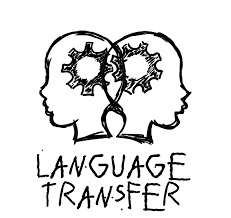
What it is: A step-by-step guide to the Spanish language, presented in a free audio course.
If you find language learning too haphazard and don’t know where to start, Language Transfer might be the right option for you. This is a fan-favorite among Spanish learners and it’s easy to see why: It was created by one guy (there’s a whole documentary coming out in 2024 about his story) and it’s completely free. Yes, really. (Mihalis Eleftheriou runs the program completely based on donations, so consider donating if you like it and are able to!)
Language Transfer works by introducing you to a single element of the Spanish language—say, word stress or a single verb—and building on it. It’s an incredibly logical approach to language learning, and one that I haven’t seen anywhere else.
Mihalis does a lot of talking and explaining throughout the course as he works with a Spanish language student to build a strong foundation in the language. It takes a little while to really get going, and it only has an audio component, but the course is well worth your time if your goal is to actually understand Spanish (and not just memorize a couple of phrases). There are 90 lessons and by the last lesson, you’ll be confidently forming sentences in different tenses.
Mondly
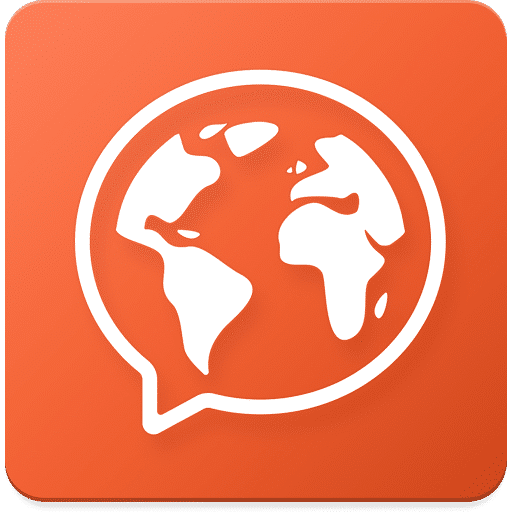
What it is: A well-structured, comprehensive course that leans into innovative tech.
Mondly has lessons on many different topics, like transportation, colors, school, shopping and much more. There are also grammar explanations and vocabulary lists, daily lessons, weekly quizzes and even competitive events. As a bonus, the interface is very user-friendly and allows you to check the meaning for any word in any sentence.
What sets Mondly apart from competitors is its drive to push the boundaries between language learning and technology. The program includes opportunities to learn with AR, VR and AI chatbots. These allow you to take everything you learn on the program and actually use it in simulations of real-world scenarios, whether that’s taking a one-on-one class with a teacher, checking into a hotel or texting a friend.
These features may feel like gimmicks to some learners, but as an introvert, I find them incredibly empowering. They give me a chance to listen, speak and write in Spanish in a safe and non-stressful environment. They also provide approximations of real conversations I might have out in the world, giving me a chance to practice before I head out to interact with real people.
Tools to Improve Grammar
WordReference Forums

You may know WordReference as an online dictionary, but what you might not know is that it has dozens of specialized forums. The most useful for Spanish learners are the Spanish-English Vocabulary and Spanish-English Grammar forums.
Whenever you have a question related to Spanish grammar or vocab, use the “Search” function—chances are that someone’s already asked it before. If your question hasn’t been asked or answered before, just create a new post. The people on the forum are super friendly and eager to help, and they’re native speakers of Spanish from many different countries, so you can be sure you will get the answer you need even if it is a regional or dialectal one.
If you want to contribute to the community, have a look at other peoples’ questions and, if you know the answer, help them! They will be as thankful as you are.
StudySpanish.com Grammar Lessons

What it is: A huge collection of Spanish resources with an excellent, comprehensive Spanish grammar course.
If you don’t already have this website bookmarked, I highly recommend it. The site has so many Spanish resources, including vocabulary lessons, verb drills and, of course, grammar.
There are nine grammar units, each of which is split into several lessons. Lessons contain full grammar explanations, lots of examples, conjugated verbs and even flashcards. Together, they form a comprehensive guide to Spanish grammar.
You can go through the lessons one at a time in order, but I find it more productive to focus on a specific topic with all my learning programs. For example, if I’m on the episode of Language Transfer that teaches negation, I’ll find the lesson about negation on StudySpanish.com and reinforce that learning. This is also an excellent resource to turn to if you’re trying to learn a new grammar concept and just aren’t getting it, since the explanations are clear and the examples are plentiful.
Tools to Increase Vocabulary
SpanishDict

SpanishDict is a popular Spanish dictionary with a vocabulary-learning section that’s bursting with thousands of themed vocabulary lists. Topics are incredibly varied and include general common words, lists for specific jobs like medicine and retail, local slang from around the Spanish-speaking world and even some more niche lists like adjectives to describe your food.
These lists are always fun to explore, but I prefer to my own vocabulary lists. Any time I learn a new word on a different program or on my own, I add it here, too. I can make as many lists as I want, and categorize them based on theme or even where I found them. The program then tests me on these vocab words, helping me to learn them without needing to spent much time on setup.
The textbook vocabulary section is another fantastic feature if you’re studying with a textbook. Simply choose your book from the robust list provided and SpanishDict will do the rest of the work for you. Each textbook has all the vocab taught in the textbook, split up by unit and lesson. The website even includes highlights from the lessons, so you can study them right there without even opening your book!
YouTube Vocabulary Videos
What it is: Thousands of Spanish vocabulary videos from many different creators.
YouTube really is a goldmine when it comes to learning languages, especially Spanish. You can find everything from grammar lessons to writing practice. I don’t learn well with video lessons, though, so I prefer to use it for vocabulary studies. And boy does it have a lot of those! You can find a video on practically any vocabulary topic. I’ve used it to rapid-fire study categories of new words, but I’ve also used it to look up the pronunciation and use of one single word at a time.
Vocabulary learning videos come in many different styles. There’s the straightforward vocabulary video that shows you each word and its meaning, one after another, like this one from SpanishPod101:
There are teacher-led videos that include explanations and examples, like this video from Spanish After Hours:
Some videos even teach Spanish vocabulary by introducing the words and sentences, then sharing a memorable story using the new vocabulary in a natural context, like this one from FluentU Spanish:
There are even videos specifically created to help you learn Spanish words while you sleep! This little list is just a sampler of the hundreds of useful vocabulary videos you can find on YouTube. So head over there, type in “Spanish vocabulary” and start learning.
Drops

What it is: Learn Spanish vocabulary with five-minute daily lessons.
Learning with Drops is just plain fun. The program uses repetition, mnemonics and engaging games to teach Spanish vocabulary. It’s also one of the most visually appealing language learning apps I’ve ever used, making it an overall pleasure to work with. Vocabulary is taught through text, audio and images, and the whole experience is seamless.
The catch is that, unless you pay for a subscription, you only get five minutes of learning every 10 hours. This might be a deal-breaker for many people, but I urge you to download it, anyway. Some days, I simply don’t have the time to dedicate an hour to studying Spanish. That’s when I reach for the Drops app, because I know I only have to commit five minutes of my time, and more than that. Even on the busiest days, we all have five minutes to spare!
Tools to Improve Listening Skills
Coffee Break Spanish
What it is: Podcast-style lessons presented by a host and a rotating cast of native-Spanish-speaking guests.
Coffee Break Spanish is designed to fit around your busy schedule, with each podcast lasting around 20 minutes—about the length of a typical coffee break. Host Mark and his various co-hosts cover grammar topics like conjugation and parts of speech, and discuss topics you’ll encounter in the real world like making arrangements to meet someone or talking about a recent vacation.
Many of the podcasts are available to listen to for free and without an account, but a premium account will give you additional study materials like transcripts and related activities.
I love Coffee Break Spanish because, unlike many other learning resources, it doesn’t shun more advanced learners. As you progress through the course, lessons change their form to accommodate the higher levels. The first few levels are mostly in English, showing Mark working with a student to teach the fundamentals of the language. At level three, Mark’s co-host goes from being a learner to being a fellow native speaker, and at level four you get a story with a whole cast of characters. This is a rare resource that grows with you, and I especially recommend using it at more advanced levels.
News in Slow Spanish

What it is: Podcast episodes that talk about current events at a slower pace than natural Spanish speech.
As the name suggests, the podcast-style program presents worldwide weekly news on topics that range from politics and culture to travel and art. Each episode is divided into two big chunks. The first part includes four pieces of news from around the world, read by native speakers of Spanish. You can choose if you want to listen to them at a slow or normal pace, and you have access to transcripts of the news in the form of a PDF document.
The second part of each lesson focuses on a specific aspect of the Spanish grammar and includes a mini-lesson on Spanish expressions. All this is spiced up with materials that explain the grammar topic, expand the information on the expressions and let you do activities and quizzes related to the lesson.
Every morning, I read the top news stories from around the world to know what’s going on. News in Slow Spanish lets me do this while learning Spanish. By switching out an activity that you already do for its Spanish counterpart, you can piggyback off a routine that already exists, so you don’t have to form a new habit just for Spanish learning. In other words, work smarter, not harder!
Dreaming Spanish
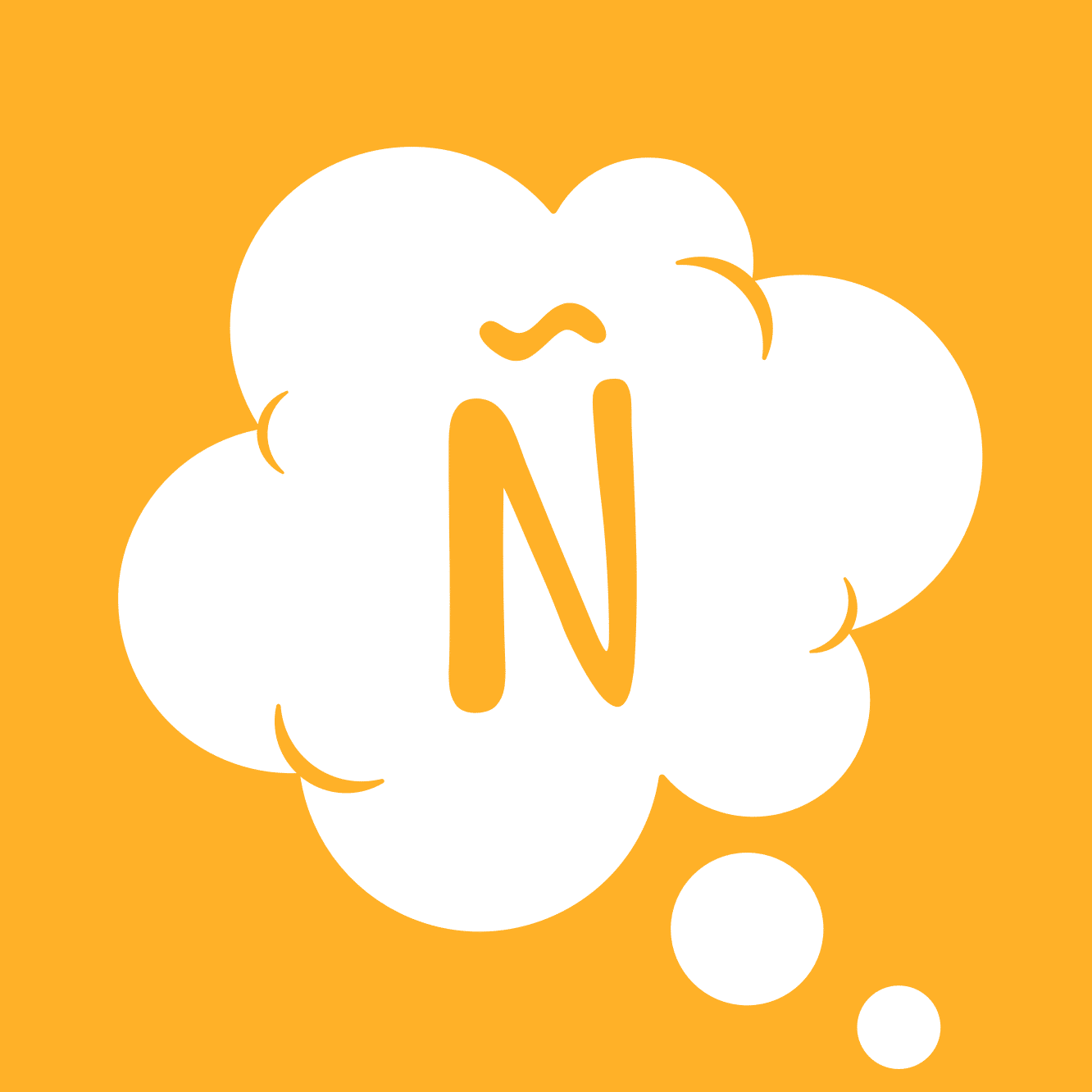
What it is: YouTube-style blogs, vlogs and fun videos that teach Spanish by gradually increasing difficulty.
If you already watch YouTube videos like vlogs and ranking videos, Dreaming Spanish is a resource that builds on that format to form a complete language program. It starts learners at the “super-beginner” level and lets them work their way up to “advanced” with increasingly difficult content.
Even the easiest videos on the site use absolutely no English, so you’re truly immersed in the language from the moment you start. At the lower difficulties, the hosts do an amazing job of speaking slowly and clearly, and showing what saying through gestures and expressions. And the videos are actually engaging and similar to videos I’d click on in English: a series where one host tries to guess the Disney character the other host is describing, an Argentinian girl tier-ranking all the countries she’s been to, a vlog-style date-night video and even a debate between a scientist and a flat-earther.
This is one of my favorite ways to learn, because it doesn’t feel like learning. So many programs try to sell you on this point that it sounds like marketing gibberish, but Dreaming Spanish genuinely accomplishes this.
Click here to read our full review on Dreaming Spanish.
Forvo
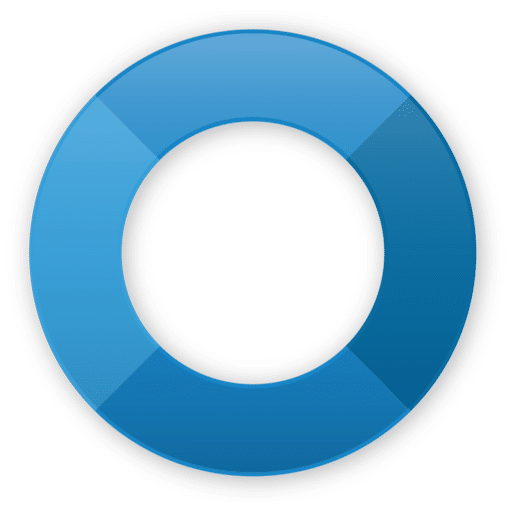
What it is: Volunteer language speakers provide natural pronunciations for nearly every word in Spanish.
Forvo is a pronunciation dictionary that allows you to listen to nearly every word in existence, in nearly every language. It’s not a learning program, but rather a very useful tool to keep on hand for when you’re not sure how to pronounce something.
Search for any Spanish word to hear it spoken by male and female native Spanish speakers from around the world. For example, there are 72 recordings of the word hola, which you can filter by Spain, Latin America and “Other” (in this case, native Spanish speakers from the United States and England). Apart from single words, there are often expressions and full sentences that use the word that you searched for, also accompanied by audio.
Forvo is the kind of tool you’ll be using at every stage of your studies. I personally like to check Forvo every time I learn a new word from a written source like a book or a newspaper article. Try choosing your favorite audio and shadowing the word along with it (that is, reading it at the same time as the audio plays) to make sure you get the cadence and tone right, too.
Tools to Improve Reading Skills
Lingua

Lingua has vocabulary, grammar listening and diction sections, but its best offering is in the “reading” tab. Here, you’ll find more than 130 texts, a chunk of which are free to access without an account.
The site is very easy to use: Just click on a title and start reading. You can also hit play on the audio below the text and read along with the narration. After you finish reading, answer the reading comprehension questions to the right of the text. The questions and answers are all in Spanish, too, so you can’t fall back on your knowledge of English to respond.
As a parent, I know this format well—this is how many school programs teach kids to read and understand what they’re reading. It’s used because it works, and I’ll give you the same advice I gave my daughter to make full use of this program: read the questions first, then the passage. This helps to focus your reading on what you’ll be answering. Even if you can’t understand every word of the text, you’ll find that you can answer the questions correctly more often than not! The more you read, the easier this will get, and the more you’ll understand.
Practical Spanish Readings

The texts on Practical Spanish are divided into four levels, from absolute beginner to advanced. Readings for the two “Beginners” levels each include a short text (often featuring a funny twist), questions with answers and some expressions for you to learn. This is all presented next to its English translation, and all the Spanish texts are available in the form of audio recordings so that you can listen to and read the text at the same time.
The intermediate lessons include longer texts divided into sections with the English translation visible on the right side, along with audio recordings. Advanced lessons have longer, more complex texts in Spanish with audio recordings and English translations hidden behind a link.
If reading real texts in Spanish is too intimidating for you, this is a great place to start. However, I strongly recommend covering the English translation of the texts with your hand or a piece of paper and trying to read the Spanish side on its own, first. Otherwise, it can be easy to use the English translation as too much of a crutch! Even better, stick a post-it onto your screen over the English translation and try writing your own. How does your translation compare to the website’s?
123TeachMe.com

What it is: Graded readings paired with quizzes and vocabulary learning.
This website is well known as a conjugation tool and basic learning resource, but many learners don’t realize that it also has a great selection of graded readings. The readings are divided into four levels, and each level includes hundreds of texts paired with comprehension quizzes. Many of the quizzes also have a vocabulary section where you can learn the most challenging words of each text.
Some of the lower difficulty quizzes are just a sentence or two in length, and the “vocabulary” section breaks down most of the sentence one part at a time. This makes the tool particularly useful for learners who are just starting to form their own sentences. I come back to this resource once in a while when I need a break from more strenuous studies and just want to analyze a short text or sentence. It’s always helpful to see how a sentence is put together, so I can adapt it for my own use in later conversation.
Tools to Improve Writing Skills
Kwiziq

Kwiziq turns you into the translator in of a bilingual text. Each exercise starts with Kwizbot the chatbot asking you to translate some sentences into Spanish. You’re shown which grammar topics you’re practicing, so you know what each translation is training. When you type in your translation, Kwizbot tells you where you made mistakes and allows you to give yourself a mark for your work. Then, he gives you another sentence to translate. During the translation process, you’re be given advice as to which grammar lessons (also included in the course) you need to revise, and at the end of the exercise you get the full correct text with audio.
By having you translate the text, Kwiziq forces you to really apply what you know. There have been plenty of times when I relied on the English subtitles of a Spanish video, or skimmed over words to get the general idea of a Spanish text. The way Kwiziq teaches encourages you to slow down and think critically about each word in a sentence. This is usually what I end my Spanish study sessions on, since it takes everything I’ve learned about vocabulary and grammar and applies them to actual sentence construction.
r/WriteStreakES
What it is: A subreddit community where members regularly write in Spanish and others correct their writing.
If you struggle to write every day, it can help to have someone else hold you accountable. Or, in this case, 14,000 someones. This subreddit is a community of Spanish learners and native speakers who want to write every day. Members are encouraged to maintain a writing streak and write at least a little every day. Some members have been writing regularly for over 100 days straight!
You can tag your post to request feedback and corrections. You won’t always get help, but every few posts, another kind redditor will provide a corrected version of your text. You can also go into other peoples’ posts to see what they’re writing about or see how their text was corrected. As with any community-driven approach to learning, reciprocation is always appreciated! There are “WriteStreak” pages dedicated to several other languages, so if you want to pay it forward, head to the one dedicated to your native language and help a fellow learner out.
Tools to Improve Speaking Skills
italki
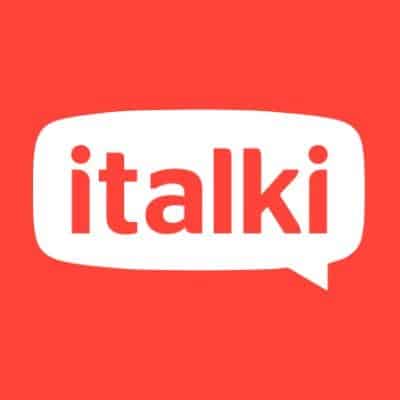
The best way to practice speaking Spanish is to have someone hold you accountable for it. The italki program helps connect you to a Spanish language tutor who can help you work on your pronunciation, speaking fluency and any other aspect of the Spanish language that you want to improve. There are hundreds of tutors to choose from, so it’s easy to find someone who can work around your schedule, budget and learning type.
While the tutoring aspect is the main draw of italki, the website also has a community of learners looking for a language exchange partner. The language exchange features are free and very active. Look for a partner who’s learning your native language—and make sure to schedule face-to-face meetings (virtual or otherwise!) so you can actually get a chance to speak Spanish.
Interactive Speaking Practice on YouTube
What it is: YouTube videos that give you space to speak your responses in a roleplay imitation of real scenarios.
If you’re at the stage in your learning where you have a lot of Spanish under your belt but you don’t yet feel comfortable speaking it out loud, these YouTube videos are a great resource to use. These videos give you a chance to speak Spanish in pretend conversations, like making phone calls, buying groceries at the supermarket and other real-life scenarios.
You can find many of these videos on YouTube by searching for “interactive Spanish conversation,” but two excellent channels I love for this are Hola Spanish and Español con Ali. Both offer scripted responses for your side of the conversation, but you can always go off-script and try forming your own responses for even more effective speaking practice.
Each of these tools is great for one or more specific aspects of the Spanish language, but together they become an invincible toolkit for effective learning that will make your Spanish skills shine. Happy learning!

